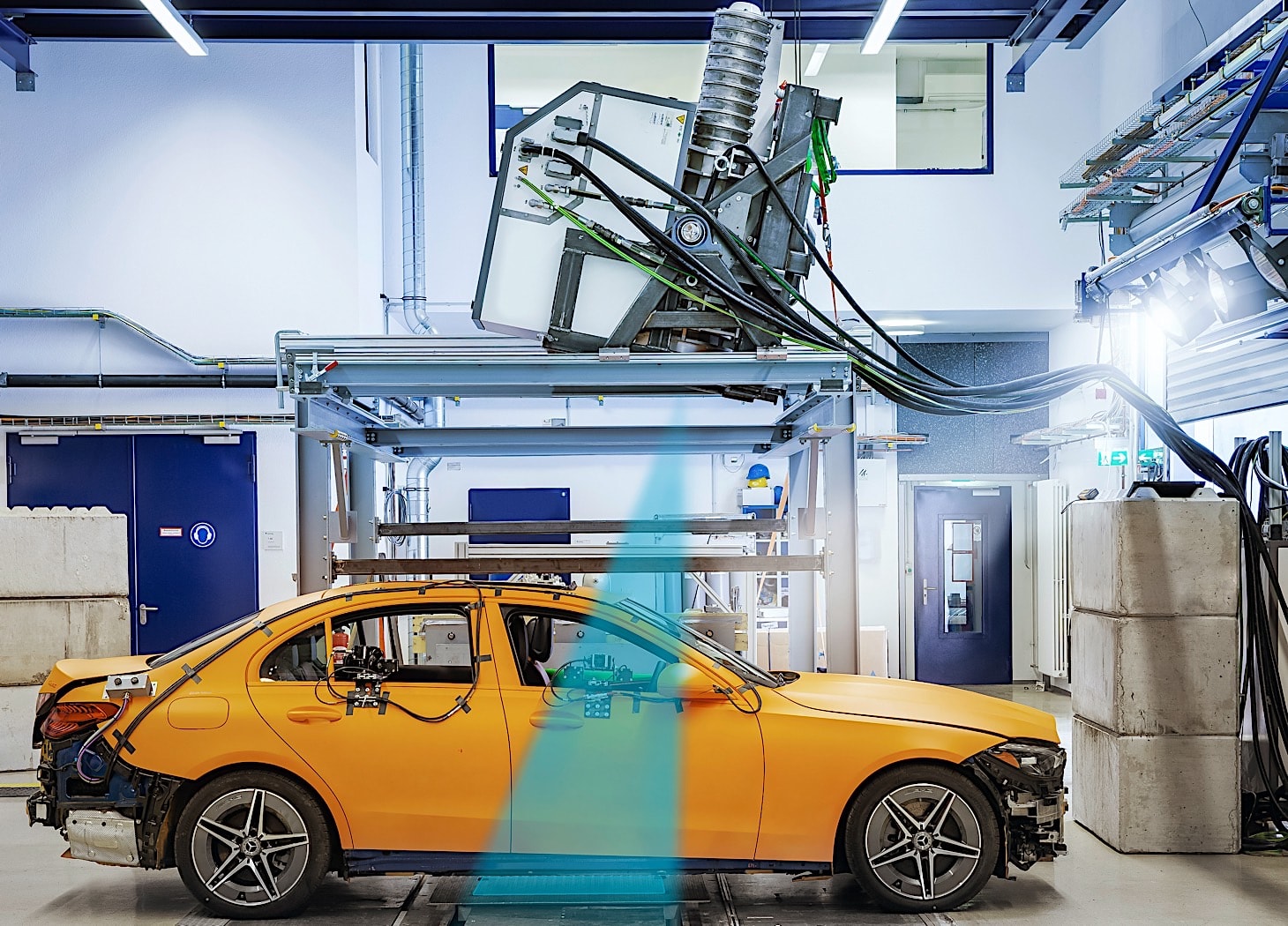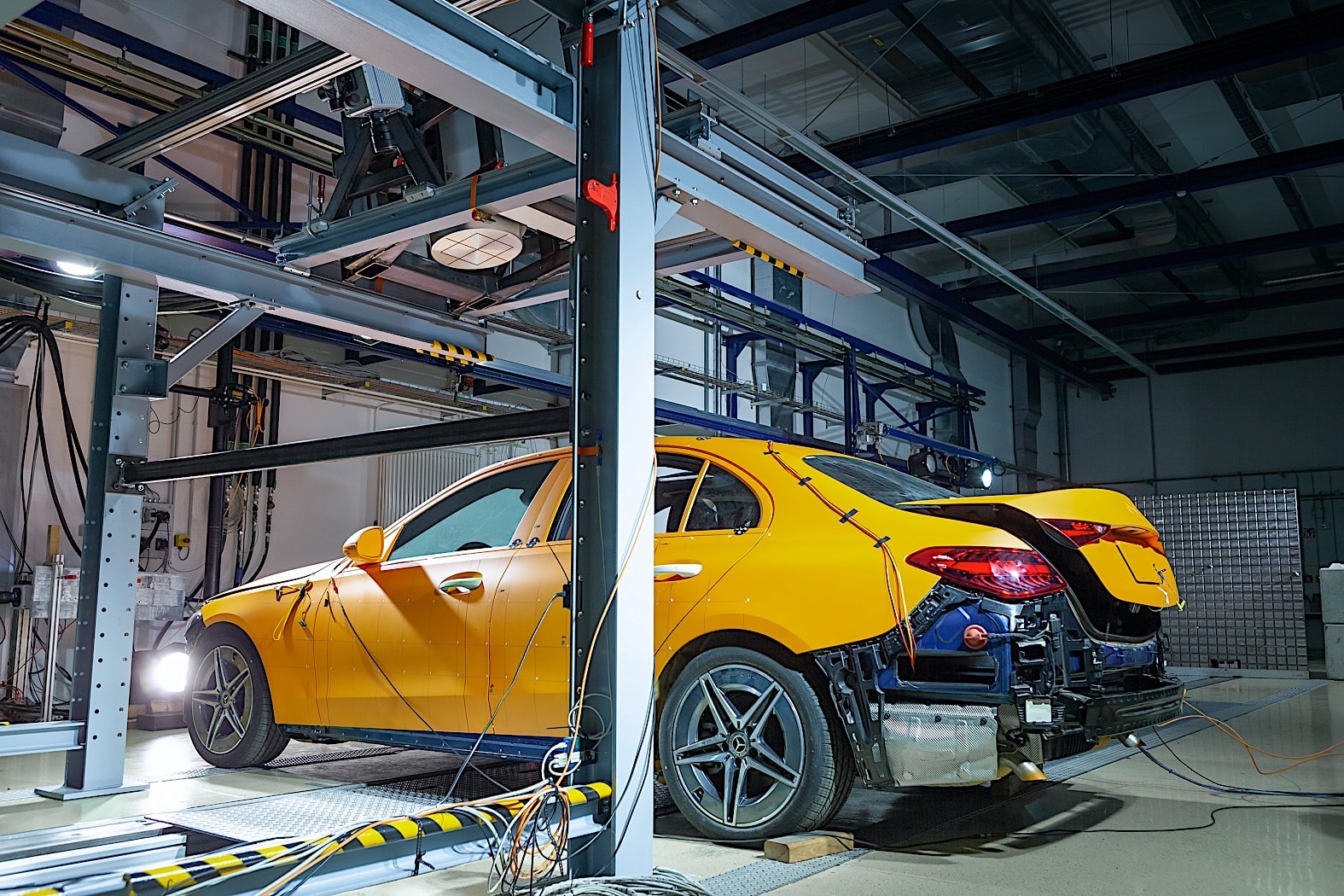Crash testing remains a cornerstone of automotive safety evaluation, providing crucial insights into vehicle performance and occupant protection during collisions. Originating from early experiments in the 1930s, crash tests have evolved into a standard practice, influencing automotive design and legislation worldwide.
Mercedes-Benz recently made history by conducting the world’s first X-ray crash test with a real car. Collaborating with the Fraunhofer Institute for High-Speed Dynamics, the experiment employed a C-Class saloon and a state-of-the-art linear accelerator acting as an X-ray camera.

This groundbreaking test offered unprecedented visibility into the intricate dynamics of vehicle deformation and occupant response during a crash.
With photon energy up to nine megaelectron volts and a rapid imaging capability of up to 1,000 frames per second, the X-ray camera provided unparalleled insights into safety-relevant components and human body kinetics.
While currently a proof of concept, the X-ray crash test technology holds immense potential for enhancing crash testing methodologies. Its transparency, high-resolution imaging, and compatibility with existing testing infrastructure signify a promising future in automotive safety research and development.
As Mercedes-Benz continues to push boundaries in crash testing, the automotive industry stands poised to benefit from unprecedented advancements in vehicle safety.

